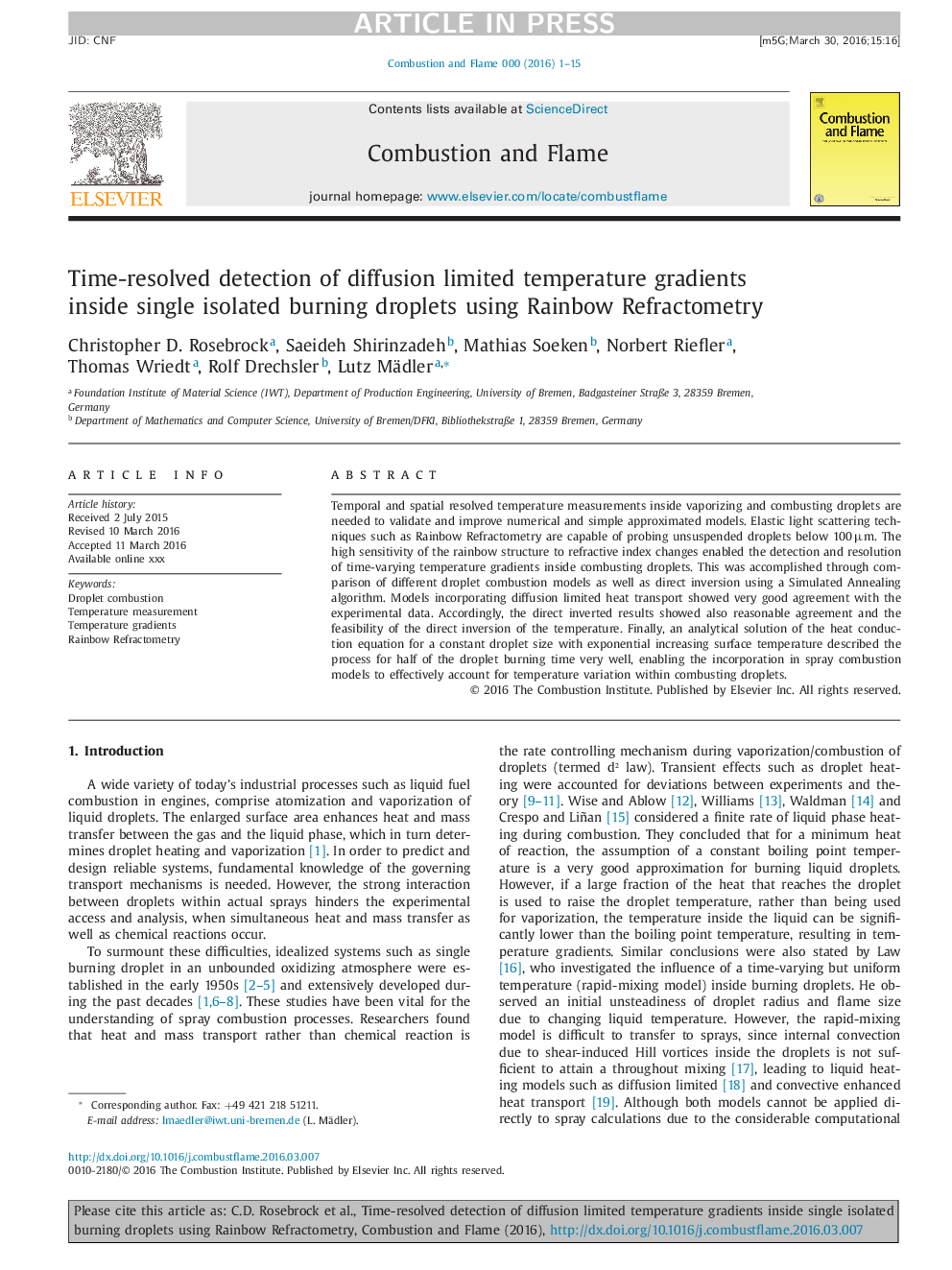| Article ID | Journal | Published Year | Pages | File Type |
|---|---|---|---|---|
| 6594051 | Combustion and Flame | 2016 | 15 Pages |
Abstract
Temporal and spatial resolved temperature measurements inside vaporizing and combusting droplets are needed to validate and improve numerical and simple approximated models. Elastic light scattering techniques such as Rainbow Refractometry are capable of probing unsuspended droplets below 100 µm. The high sensitivity of the rainbow structure to refractive index changes enabled the detection and resolution of time-varying temperature gradients inside combusting droplets. This was accomplished through comparison of different droplet combustion models as well as direct inversion using a Simulated Annealing algorithm. Models incorporating diffusion limited heat transport showed very good agreement with the experimental data. Accordingly, the direct inverted results showed also reasonable agreement and the feasibility of the direct inversion of the temperature. Finally, an analytical solution of the heat conduction equation for a constant droplet size with exponential increasing surface temperature described the process for half of the droplet burning time very well, enabling the incorporation in spray combustion models to effectively account for temperature variation within combusting droplets.
Related Topics
Physical Sciences and Engineering
Chemical Engineering
Chemical Engineering (General)
Authors
Christopher D. Rosebrock, Saeideh Shirinzadeh, Mathias Soeken, Norbert Riefler, Thomas Wriedt, Rolf Drechsler, Lutz Mädler,
